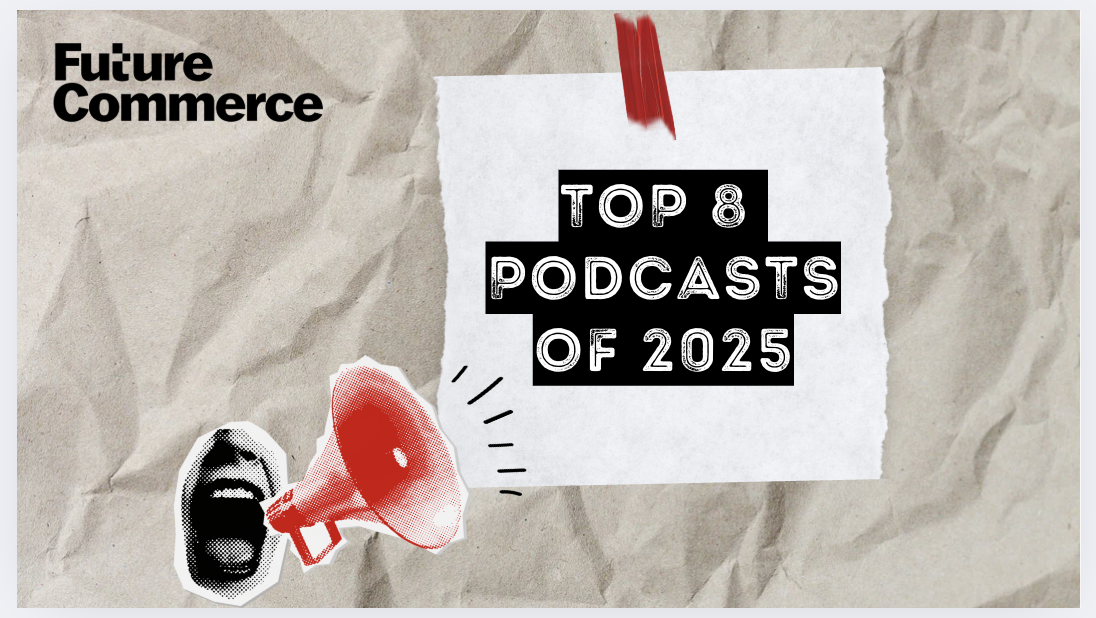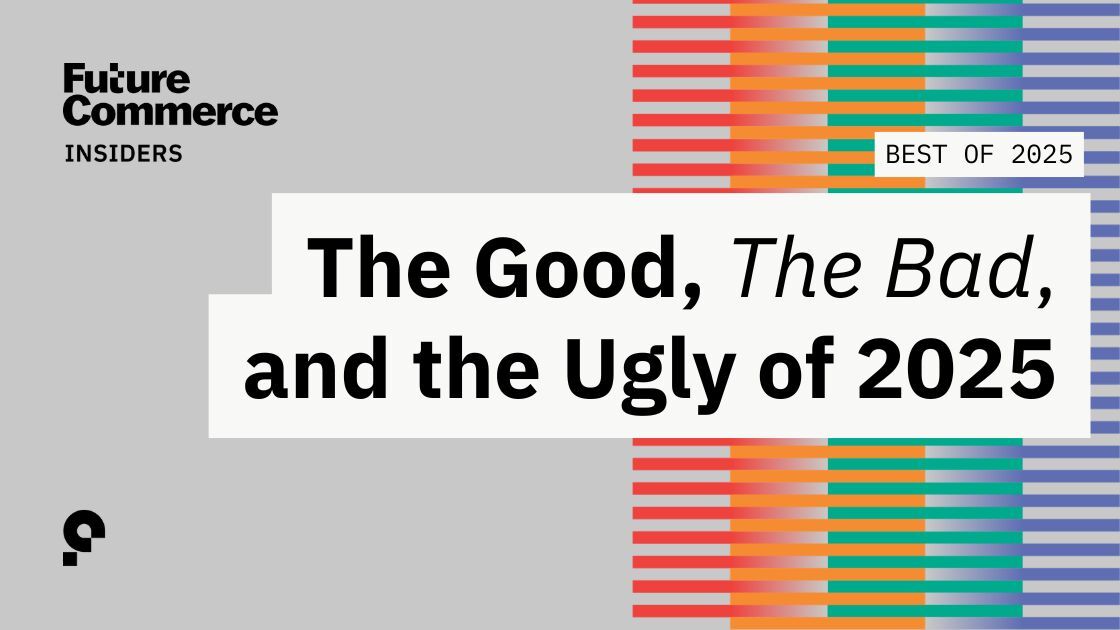
A Mental Model for Brand Impact: Generational Brands

Welcome to Friday, futurists.
You’re experiencing futur-ja-vu, the feeling you get when you see Future Commerce in your inbox twice within a 24 hour period. No, it’s not a glitch in The Matrix; this is the kind of thing that happens in a short week with a small-but-mighty-busy-team.
So thanks for giving us your repeated attention. It means so much.
We received a fair bit of feedback on Wednesday’s letter, “Spatial Commerce is the next big thing”; and most of those thoughts vehemently disagreed. The key part of the piece that was missed by the critic class among us? This line:
Don’t get us wrong: commerce will be a keystone part of spatial computing adoption for consumers. Not because of the tech, but because wherever people commune, commerce coexists.
Regardless of what technology enables it, Big-C-commerce exists wherever people are. It’s an uncomfortable, but vital truth — we all have to participate in commerce in order to exist in this world. That’s what makes your job the most important on the planet: you (all, like, the entirety of the commerce leadership ecosystem) have the ability to touch every person alive.
The longer your brand persists, the greater impact you have on people. Facts.
So here’s my mental model for brand impact:
- Microbrand: a handful of customers, handful of skus, and a niche focus. Short-lived, meaningful, but ultimately lost to history.
- Capital-B Brand: you have ubiquity; you’re beloved. Your success ebbs and flows based on fads and fashion. You got lucky to be where you are, but your future is not guaranteed.
- Generational Brand: “Arm & Hammer” is my go-to example here. (Betty Crocker is a suitable surrogate, too). You’ve been around for eons. You’re part of the fabric of society. You don’t need “brand heat” to move product; on the contrary, it seems like the uglier your brand, the better.
- Cultural Brand: This is the goal. A generational brand existed before this culture existed; but a Cutural Brand? It will impact the culture to come. It defines the culture because the culture has adopted it as its own.
A cultural brand is, by its nature, a Multiplayer Brand. It shapes the culture because it allows the culture to shape it.
Today on the podcast we’re joined by the visionary leader of one such cultural brand — Clark’s. Clark’s C. & J. Clark is a brand that, for nearly two hundred years, has set the tone for a culture, by allowing other cultures to adopt, and adapt, it.
Tune into this week’s episode of the podcast for a longform discussion with CMDO of Clark’s, Tara McRae, about how they’re planting seeds for the future, as they chase their Consumer Muse.
— Phillip
P.S. The cake is a lie. The oft-repeated marketing myth about Betty Crocker’s cake mix innovation — the “egg story” — is a tall tale that confirms our biases, and lacks nuance. Read more in this week’s Insiders, guest authored by Matt Klein of ZINE.

BR (is the new DQ is the new WW is the new RH). Desperate to continue its revamp, don’t-call-it-Banana-Republic-anymore-it’s-just-”BR”-now launched their home furnishings line earlier this week. Friend of “FC”, Rebekah Kondrat, stopped by the new SoHo concept to capture a pictorial review of BR's new lifestyle and home goods brand. With room vignettes, live plants, and a mix of “RH”, Zara, and old-school BR vibes, it's like a safari for your wallet, with a side of brick-and-mortar critique that only Rebekah can provide. And if anyone knows why brands rename themselves to two initials, can you drop a reply here? It’s RS: really stupid.
Texas-sized Ambitions. Dave Clark, former Amazon senior executive and (checks notes) now ex-CEO of Flexport, is reportedly considering a run for governor of Texas. From managing deliveries to potentially managing a state, Clark's ambitions know no bounds. Will Texas politics get a Prime upgrade?
Our Take: There is some speculation of Clark being cast in the starring role of a sacrificial lamb —a transitionary CEO who takes the hit for a forthcoming losing streak in a high-growth business.
Whether it’s true or not, it’s going to be a challenge for Flexport to manage their way through a number of crises. Founder Ryan Petersen’s return was marked by a social media post promising a hiring freeze, and rescinding offers of employment.
Whether it’s intentional or not, the narrative is that Petersen has come to right the freighter; following a horse-trading deal with Shopify that swapped 13% interest for ownership of Shopify’s failed $2.1B acquisition of Delivrr.
General Manager Barbie. Mattel's latest Barbie collection is a nod to "Women in Sports." Featuring a coach, GM, referee, and sports reporter, it's clear Barbie is done with the dream house and ready for the big leagues. Ken's job? “Just waterboy.” 👌
The A.I. Grammy Chase. In a world where A.I. can't win a Grammy, Ghostwriter, the anonymous artist, is gunning for one. After stirring the pot with the A.I. track “Heart on My Sleeve,” Ghostwriter has been rubbing elbows with industry execs. Lukewarm take: the songs aren’t even good, which makes them a shoe-in.


Clothes or Performance Art? Are your clothes just clothes, or are they...performative? Dive into the world of "slapper sotto voce garments" and decide for yourself, in this issue of Blackbird Spyplane. Just remember, if your jeans are trying too hard, it might be time for an intervention.

Analysts Get Hanky Panky. Get a taste of the analyst ecosystem and the Gartner Magic Quadrant with this deep dive by recovering analyst Brian Walker. Little-known fact: fernet branca is made with 27 bitter herbs and spices — yes, like the Colonel’s secret recipe — and this breakdown of the analyst ecosystem leans hard into both analogies. It's a mix of fernet, historic cocktails, and a mic drop on why MQs and Waves are essentially meaningless. Cheers to that!
“Girl Dinner Land” Doesn’t Have Quite the Same Ring. Babybel Cheese is taking us down memory lane by teaming up with Candy Land. Yes, we double-checked, and that’s correct. The collaboration, dubbed "Babybel Goodness Land," aims to bridge the generational gap between kids and millennial parents. Because nothing says "family bonding" like cheese and board games.


Delta's Scent of Panic. Graphic designer Soren Iverson (whose ideas are covered extensively in our most recent zine), was inspired by real-life events for his most recent mockup. In the sendup, he imagines a future where airlines, in this case Delta, give control of the airplane to passengers — for a very steep price. This is the core idea at the heart of The Multiplayer Brand.











.svg)
